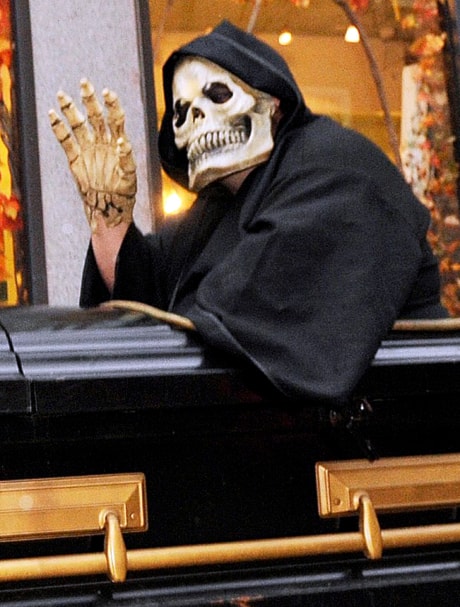CALGARY — Something more frightening than ghosts and goblins may be lurking in the shadows this Halloween when kids go door-to-door or dig into their candy stash.
Doctors say crowded parties or communal candy bowls could potentially contribute to the spread of the H1N1 flu, but that with a little common sense children and parents should be able to avoid any unexpected scares.
Halloween isn’t typically known as a occasion where children spread illness more than any other time, but it does combine several key risk factors for spreading the flu, says Dr. Anne Matlow, director of infection prevention and control at Toronto’s Hospital for Sick Children.
“Crowds of kids ... the excitement of putting your hands in all that candy and just eating stuff as you go along and kids all crowded around the door,” she says. “You add it all up, it’s got the makings for something.”
Matlow says first and foremost, kids who are not feeling well should stay home.
Children should avoid eating anything that is not wrapped. Attention should also be paid when children are allowed to reach into a bowl to pull out treats, because a virus on one child’s hand could end up on the candy and picked up by another child.
Handwashing or using hand sanitizer can cut down the risk, she says.
“When you come home and want to sort through your candies, you should first wash your hands.”
Parents shouldn’t be worried that children could consume food contaminated with H1N1 because swallowing the virus doesn’t cause infection, says Dr. Bonnie Henry, director of Public Health Emergency Management at the B.C. Centre for Disease Control.
That means food safety in general is usually much more of a concern around Halloween than spreading colds and flus.
“The one thing about Halloween is that it’s outside for the most part and the virus doesn’t live very long outside, so that’s protective, too.”
But Henry suggests parents might want to be a little more cautious than normal when shopping for costumes for their children. A mask in a costume store could potentially be contaminated for a few hours if the last person to try it on was sick and coughed while wearing it, although the risk is low.
She suggests a better way to buy masks is for parents to visually size them up for fit and then wipe them down with a sanitizing cloth before handing them over.
The number of children registered to attend Halloween parties at three Calgary YMCAs hasn’t dipped this year and parents haven’t been calling with concerns over swine flu, says spokeswoman Thalia McRae.
Hand-sanitizer stations have been set up at the exercise facilities for months, she says, and organizers have learned over time how to keep infection from spreading when youngsters are in close quarters.
Instead of communal bowls of candy, children are handed individual goody bags. Cookie decorating is accomplished with personal bowls of icing.
“It’s safe and still fun. We have a lot of kids in our building, so it’s something that’s on our radar.”
Youth between 11 and 17 years old at another Calgary party, held at the Southland Leisure Centre, will be reminded to use hand sanitizer before digging into treats, says Brenda Olson, the centre’s superintendent of products and services. But they will otherwise be allowed to celebrate just as they have in other years.
Prevention boils down to common sense, says Matlow, and proper hygiene is important, but there’s absolutely no need for parents to keep their kids home for Halloween.
“We’re not at the point of cancelling social activities, nothing like that.”
